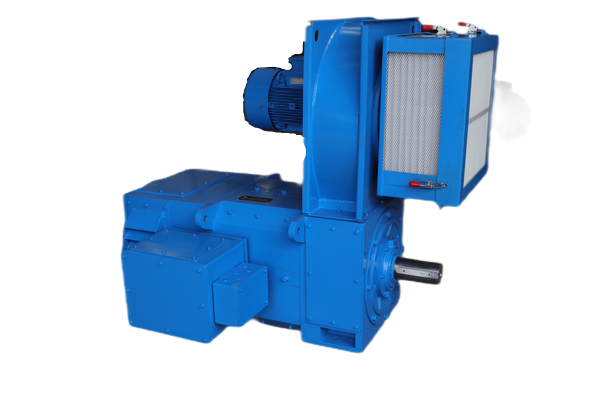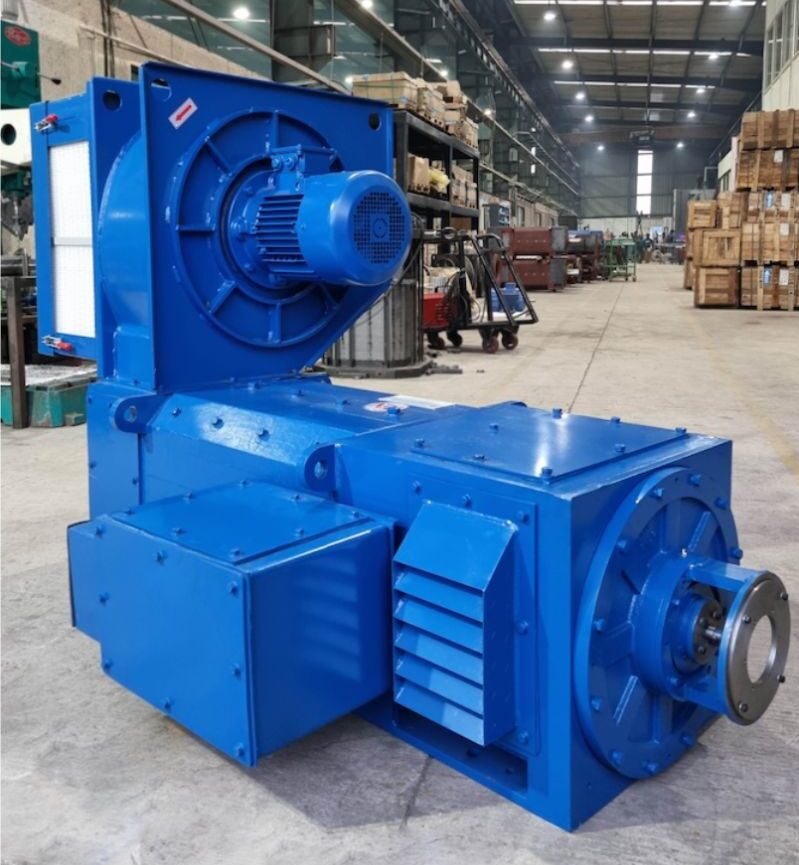The steel industry is a cornerstone of modern industrial manufacturing, and steel rolling mills are at the heart of this sector, responsible for shaping steel into various forms and products. To power the machinery in these mills, Direct Current (DC) motors are commonly used due to their reliability and precise control. However, while these motors are essential for the production process, they also introduce specific safety concerns.
In this article, we delve into the safety considerations for DC motors in steel rolling mills, providing in-depth insights to enhance workplace safety.
DC Motors Specific Hazards
Electrical Hazards
DC motors rely on electrical power, and any malfunction can lead to electrical hazards, including electric shock or fire. It is crucial to ensure the electrical systems that power these motors are meticulously maintained to prevent accidents.
Mechanical Hazards
The motors have various mechanical components, including rotating parts, pulleys, belts, and couplings. These mechanical aspects can result in accidents such as entanglement, crushing, or pinch points. Adequate safety measures must be in place to protect workers from these hazards.
Environmental Impact
The operation and maintenance of DC motors may lead to environmental issues. For instance, oil leakage from the motors can contaminate the surroundings, causing long-term environmental repercussions. Proper handling and containment procedures are necessary to prevent such incidents.
Safety Guidelines and Best Practices
To mitigate these hazards, it is essential to establish comprehensive safety guidelines and best practices. These practices encompass three crucial dimensions of safety: electrical, mechanical, and environmental.
Electrical Safety
- Lockout/tagout procedures
Lockout/tagout (LOTO) procedures are pivotal in ensuring the safety of workers when dealing with DC motors. LOTO involves de-energizing and securing machinery, such as the motors, before maintenance or repair work begins. This process includes the following steps:
- Proper training: Employee training is essential to perform LOTO procedures, ensuring they understand the steps and importance of this safety protocol.
- Equipment and tools: Provide employees with the necessary tools and equipment to carry out LOTO effectively. This may include locks, tags, and personal protective equipment.
- Documentation: Maintain comprehensive documentation of LOTO procedures and ensure they are rigorously followed. This includes recording the names of personnel, the specific machinery being locked out, and the time and date of the lockout.
- Insulation and grounding
Proper insulation and grounding are fundamental to minimise electrical hazards of DC motors. This involves:
- Regular inspection: Periodically inspect insulation materials for signs of wear, damage, or degradation. Replace or repair any components showing signs of deterioration to prevent electrical faults.
- Effective grounding: Ensure that motors are correctly grounded to prevent the buildup of static electricity and the risk of electrical shocks. Grounding conductors should be of appropriate size and securely connected to the motor.
- Isolation transformers: Use isolation transformers to reduce electrical noise and protect the motor from voltage spikes, which can cause damage or malfunctions.
- Personal protective equipment (PPE)
When working near DC motors, employees must use appropriate personal protective equipment (PPE) to safeguard themselves from potential electrical hazards. This PPE may include:
- Electrical-resistant gloves: Insulating gloves should be worn when handling electrical components. These gloves provide a barrier against electric shock.
- Safety glasses: Safety glasses with anti-fog and anti-scratch coatings are essential to protect workers’ eyes from potential electrical flashes or debris.
- Protective clothing: Employees should wear flame-resistant and electrical hazard-rated clothing to reduce the risk of burns and other injuries.
- Footwear: Electrically insulated safety shoes are a must to protect against electrical shock, especially when moisture or conductive materials are present.
Mechanical Safety
Safety measures for working around moving machinery
- Machine Guarding
Machine guarding is an essential safety measure to prevent accidents during the moving of machinery in steel rolling mills. Effective guarding should:
- Cover exposed moving parts: Guards should be in place to shield workers from contact with rotating components, belts, pulleys, and other moving parts of DC motors and machinery.
- Regular inspections: Routine inspection of guards is vital to ensure they remain intact and functional. Any damaged or missing guards should be promptly repaired or replaced.
- Education and training: Ensure workers know the importance of machine guarding and how to operate machinery safely in guarded areas.
- Emergency stop systems
Every rolling mill using DC motors should have reliable emergency stop systems. These systems must be easily accessible and marked to allow for quick response in case of an emergency or malfunction:
- Regular testing: Periodically test the emergency stop systems to ensure they function correctly and can quickly shut down machinery in an emergency.
- Maintenance and repairs: Promptly address any issues or malfunctions with the emergency stop systems to maintain their effectiveness.
The Need for Training and Expertise in DC Motor Operations
Ensuring the safety of DC motors in steel rolling mills is not merely a matter of implementing safety measures and protocols. It also involves imparting the necessary knowledge and expertise to the workforce. Proper training and education are essential to a comprehensive safety strategy in any industrial setting. Here are some key points to consider:
Understanding DC Motors
Employees working with DC motors must have a deep understanding of how these motors function. This knowledge includes their components, operation principles, and potential risks associated with them. Without this foundational knowledge, it becomes challenging to identify and mitigate hazards effectively.
Maintenance and Troubleshooting
DC motors require periodic maintenance to ensure optimal performance and safety. Trained personnel can conduct routine checks, detect issues early, and troubleshoot problems, reducing the likelihood of motor malfunctions and downtime.
Emergency Response
In an unforeseen situation or malfunction, a well-trained workforce is better equipped to respond promptly and effectively. This not only minimises the potential damage but also helps protect the safety of employees and the integrity of the production process.
Safe Operating Practices
Training programs should emphasise safe operating practices specific to DC motors and the surrounding equipment in steel rolling mills. This includes how to start, stop, and control the motors while avoiding risks associated with electrical and mechanical hazards.
Risk Awareness
Employees should be aware of the potential risks, including electrical shock, mechanical entanglement, and environmental hazards. Such awareness fosters a safety culture and encourages employees to take preventive measures.
Continuous Learning
The field of industrial technology and safety is continually evolving. Therefore, it’s crucial to provide ongoing training and development opportunities to keep employees updated on the latest advancements and best practices in DC motor safety.
To facilitate practical training and education, businesses should establish a structured training program that covers the above points comprehensively. This program should incorporate both theoretical knowledge and practical hands-on experience, ensuring that employees not only understand the principles but can also apply them effectively in their day-to-day tasks.
Relevant Safety Standards and Regulations for DC Motors
Indian Standard IS 325
This standard, titled “Specification for Three-Phase Induction Motors,” sets out requirements for three-phase induction motors. While DC motors differ in construction and operation, understanding these standards can provide valuable insights into general motor safety, such as protection against overheating and electrical faults.
Electrical Safety Regulations
The Indian Electricity Rules, 2005, lay down essential safety regulations for electrical installations and equipment. These regulations cover aspects like electrical wiring, earthing, and the safe use of electrical machinery. While these regulations primarily pertain to electrical systems, they offer important insights into electrical safety best practices that can be applied to the motors.
Factory Act, 1948
The Factory Act imposes various obligations on factory owners to ensure the safety, health, and welfare of employees. Compliance with this act is crucial in ensuring a safe working environment. It covers multiple aspects, including machinery safety, worker safety, and reporting accidents.
Bureau of Indian Standards (BIS)
BIS issues safety standards and certification for various industrial products and equipment. Although there isn’t a specific BIS standard for DC motors, it is advisable to ensure the motors in rolling mills adhere to any relevant BIS standards for electrical equipment and components.
ISO Standards
ISO standards, such as ISO 12100 for machinery safety and ISO 13849 for safety-related parts of control systems, provide international guidelines for ensuring safety in industrial settings. Complying with relevant ISO standards can help businesses establish a solid safety framework for DC motors.
Take Control of Safety with Our DC Motor
In the dynamic world of industrial manufacturing, prioritising safety is not just a choice. It’s an obligation. When it comes to DC motors, ensuring the well-being of your workforce is paramount. At The Steefo Group, our DC motors are engineered with your safety in mind. With meticulous design, rigorous testing, and a commitment to compliance with the highest safety standards, we empower you to take control of safety in your steel rolling mills.
Make the right choice for your business to protect your employees, optimise your operations, and meet the highest safety standards. Together, we can create a workplace where safety is not just a goal. It’s a reality.
Take the first step towards a safer tomorrow – invest in our DC motors and safeguard your workforce. Contact us at +91 87589 98607 or email us at marketing@thesteefogroup.com to learn more about our expertise, products, and services.


